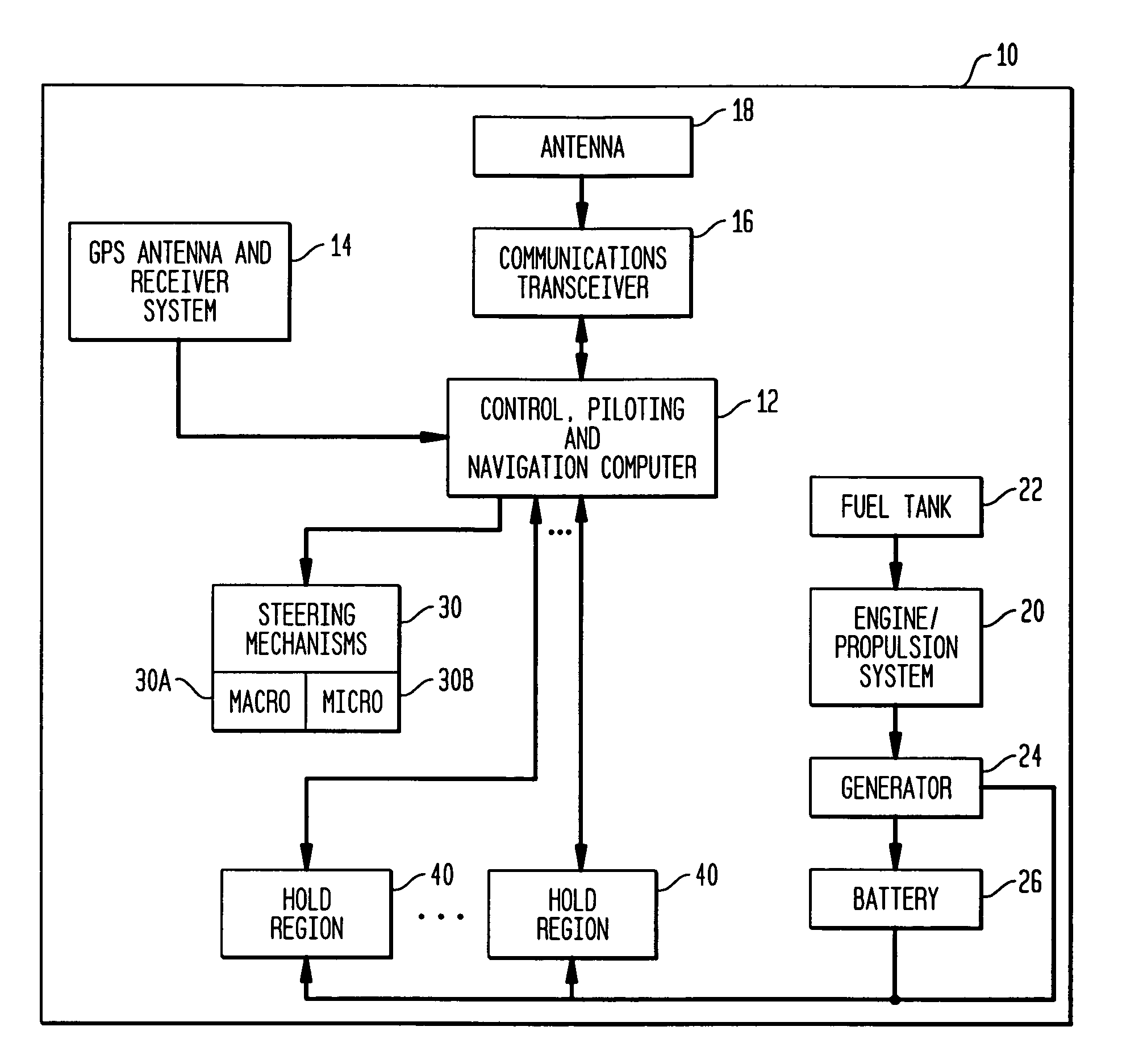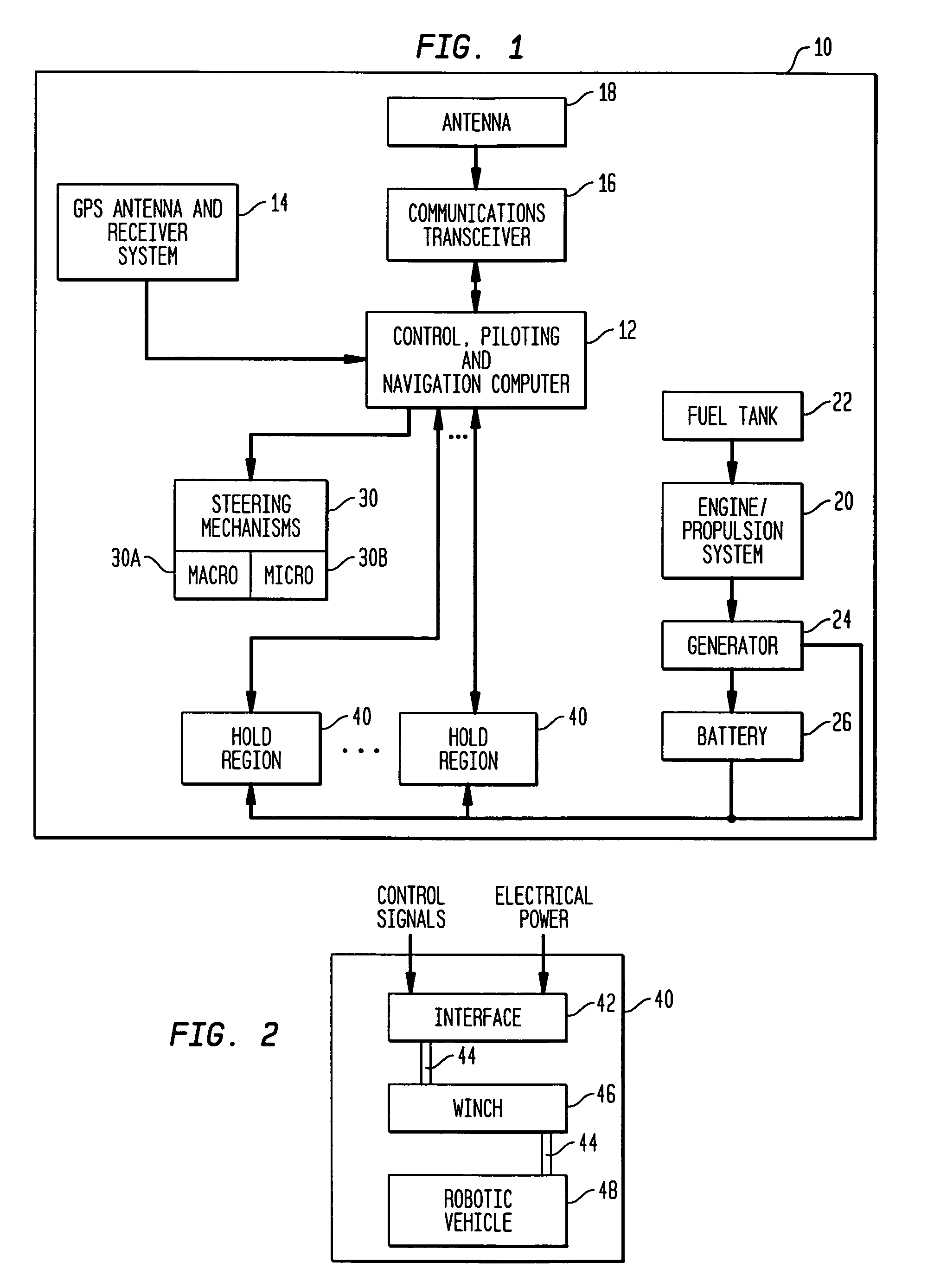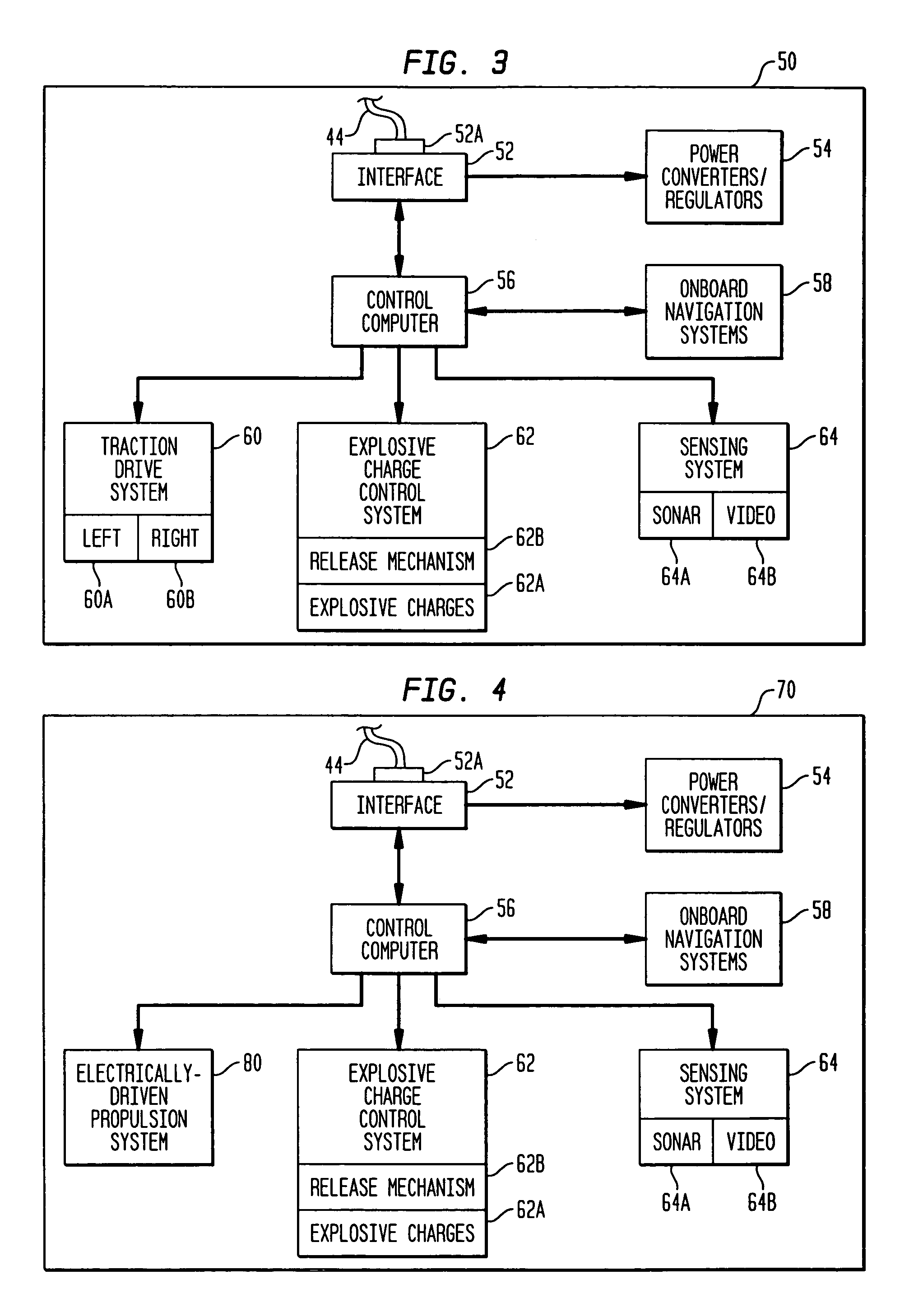Unmanned system for underwater object inspection, identification and/or neutralization
a technology of underwater objects and unmanned systems, applied in underwater equipment, special-purpose vessels, transportation and packaging, etc., can solve the problems of uuvs unable to place counter-charges on minefields or identify them under poor optical or acoustic conditions, endanger delivery personnel, and risk personnel entering minefields and endangering themselves, so as to achieve efficient and effective inspection of one or more objects
- Summary
- Abstract
- Description
- Claims
- Application Information
AI Technical Summary
Benefits of technology
Problems solved by technology
Method used
Image
Examples
Embodiment Construction
[0017]The present invention is an unmanned system that can be used to inspect, identify and / or neutralize a variety of underwater objects (e.g., underwater mines, unexploded ordnance, pipelines, or other underwater objects). In general, the unmanned system can deploy from a remote location and travel relatively long distances on the water, deploy one or more robotic vehicles therefrom to perform underwater operations as controlled from the water's surface, and retrieve the robotic vehicle(s) for return travel to a remote location. More specifically, the present invention includes an unmanned surface vehicle or boat that can stow one or (typically) more robotic vehicles while in transit to an area of interest, deploy and control the robotic vehicles using systems maintained on the boat, and ultimately retrieve and stow the robotic vehicles. Accordingly, FIGS. 1-3 depict block diagrams of the boat's capabilities (FIG. 1) and the capabilities of two different types of robotic vehicles ...
PUM
 Login to View More
Login to View More Abstract
Description
Claims
Application Information
 Login to View More
Login to View More - R&D
- Intellectual Property
- Life Sciences
- Materials
- Tech Scout
- Unparalleled Data Quality
- Higher Quality Content
- 60% Fewer Hallucinations
Browse by: Latest US Patents, China's latest patents, Technical Efficacy Thesaurus, Application Domain, Technology Topic, Popular Technical Reports.
© 2025 PatSnap. All rights reserved.Legal|Privacy policy|Modern Slavery Act Transparency Statement|Sitemap|About US| Contact US: help@patsnap.com



